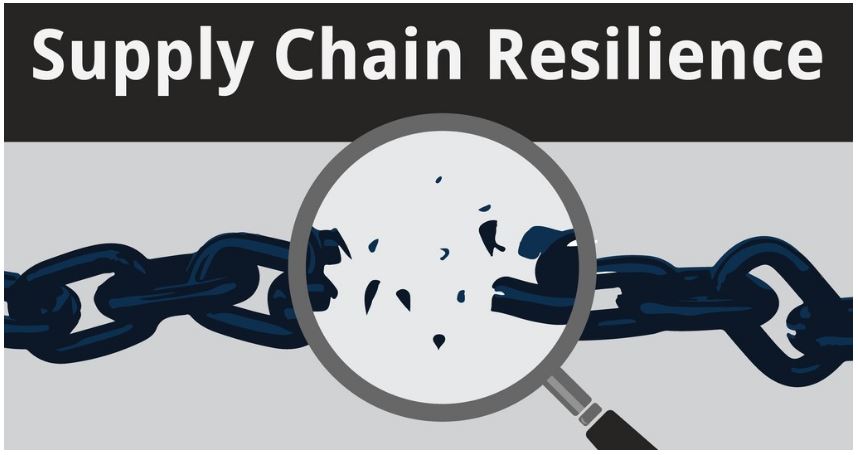Supply Chain Resiliency and Its Impact on Organizational Performance
Introduction
Impact Of Supply Chain Resilience On Organisational Performance – Supply chain resiliency is a critical aspect of organizational performance, as disruptions in the supply chain can have a significant impact on a company’s ability to deliver products and services to its customers. In this blog post, we will explore the concept of supply chain resiliency and its impact on organizational performance, and discuss strategies that companies can use to enhance their resiliency.
What is Supply Chain Resiliency?
Supply chain resiliency refers to the ability of a company’s supply chain to quickly and effectively respond to disruptions and recover from them. Disruptions in the supply chain can come from a variety of sources, such as natural disasters, geopolitical conflicts, supplier bankruptcies, and pandemics. These disruptions can have far-reaching consequences, including increased costs, lost revenue, reputational damage, and decreased customer satisfaction.
The Impact of Supply Chain Resiliency on Organizational Performance
Research has shown that companies with resilient supply chains are better able to manage disruptions and maintain business continuity, leading to improved organizational performance. For example, a study by Zhang et al. (2019) found that companies with resilient supply chains had higher levels of customer satisfaction, lower inventory costs, and higher profits than those with less resilient supply chains.
Another study by Choi and Hong (2018) found that companies with resilient supply chains were more likely to survive and recover from disruptions, and were better able to adapt to changing market conditions. Furthermore, companies with resilient supply chains were able to respond more quickly to customer demands, improving their overall competitiveness.
Strategies for Enhancing Supply Chain Resilience
So, how can companies enhance their supply chain resiliency? There are several strategies that companies can employ to improve their resiliency, including:
- Developing a Risk Management Plan
Companies should develop a comprehensive risk management plan that identifies potential disruptions and outlines strategies for mitigating their impact. Developing a comprehensive risk management plan is essential for enhancing supply chain resiliency. The risk management plan should identify potential risks and disruptions that could impact the supply chain, such as natural disasters, political unrest, supplier bankruptcies, and cyber attacks. Once the risks have been identified, the plan should outline strategies for mitigating their impact and minimizing disruption to the supply chain.
The risk management plan should be developed in collaboration with all stakeholders involved in the supply chain, including suppliers, logistics providers, and customers. This collaborative approach ensures that all parties are aware of the potential risks and are prepared to respond to any disruptions that may occur.
One key aspect of the risk management plan is contingency planning. Contingency planning involves developing backup plans and alternate strategies for managing disruptions. For example, if a key supplier experiences a disruption, the risk management plan should outline strategies for identifying and qualifying alternative suppliers to ensure that the supply chain can continue to function.
- Building Redundancy into the Supply Chain
Companies can build redundancy into their supply chain by identifying alternative suppliers and transportation modes, and maintaining a buffer of inventory and production capacity.
Developing strong relationships with suppliers is another critical component of enhancing supply chain resiliency. Strong relationships can help companies manage risks, identify potential disruptions, and respond to disruptions quickly and effectively. Companies that have strong supplier relationships are better equipped to manage disruptions, as they can rely on their suppliers for support during challenging times.
To build strong supplier relationships, companies should focus on open communication, collaboration, and trust. Communication is essential for building strong relationships, as it enables companies to share information and expectations with their suppliers. Companies should communicate regularly with their suppliers and involve them in decision-making processes that impact the supply chain.
Collaboration is another key factor in building strong supplier relationships. Companies should work closely with their suppliers to identify potential risks and develop strategies for managing those risks. This collaborative approach ensures that suppliers are invested in the success of the supply chain and are prepared to support the company during disruptions.
Trust is also critical for building strong supplier relationships. Companies should establish trust by being transparent and honest with their suppliers. This includes sharing information about the company’s operations, financial performance, and future plans. When suppliers trust the company, they are more likely to be responsive and supportive during challenging times.
Another strategy for building strong supplier relationships is to diversify the supply base. Companies that rely on a single supplier for critical inputs are more vulnerable to disruptions. By diversifying the supply base, companies can reduce their reliance on any one supplier and minimize the impact of disruptions.
- Investing in Technology
The adoption of digital technologies, such as blockchain and artificial intelligence, can significantly improve supply chain resiliency by enhancing supply chain visibility, enabling real-time tracking and monitoring, and improving risk management.
Investing in technology and automation is another critical component of enhancing supply chain resiliency. Technology and automation can help companies better manage risks, improve efficiency, and respond to disruptions quickly and effectively. By investing in technology and automation, companies can enhance their ability to monitor and manage their supply chains, as well as improve their response times to disruptions.
One technology that can be particularly useful for enhancing supply chain resiliency is real-time data analytics. Real-time data analytics enables companies to monitor their supply chains in real-time, identify potential disruptions, and respond quickly to those disruptions. Companies can use real-time data analytics to track shipments, monitor inventory levels, and identify potential bottlenecks or delays in the supply chain.
Another technology that can be useful for enhancing supply chain resiliency is predictive analytics. Predictive analytics uses historical data to identify potential risks and disruptions before they occur. Companies can use predictive analytics to forecast demand, identify potential supply chain disruptions, and develop contingency plans to manage those disruptions.
Investing in automation can also help companies improve supply chain resiliency. Automation can help companies improve efficiency, reduce costs, and respond quickly to disruptions. For example, companies can use automation to streamline the production process, reduce lead times, and improve product quality. Additionally, automation can help companies respond quickly to disruptions by enabling them to quickly shift production to alternative facilities or suppliers.
- Collaborating with Suppliers
Companies can improve their resiliency by collaborating closely with their suppliers, sharing information and resources, and working together to identify and mitigate potential disruptions.
Developing contingency plans is another critical component of enhancing supply chain resiliency. Contingency plans enable companies to prepare for and respond to disruptions quickly and effectively. By developing contingency plans, companies can minimize the impact of disruptions on their supply chains and maintain operations during challenging times.
Contingency planning involves identifying potential risks and disruptions to the supply chain, as well as developing strategies for managing those risks. Companies should consider a range of potential risks, including natural disasters, supplier bankruptcies, geopolitical risks, and economic downturns. By identifying potential risks and disruptions, companies can develop contingency plans that enable them to respond quickly and effectively to those disruptions.
Contingency plans should include both short-term and long-term strategies for managing disruptions. Short-term strategies may include identifying alternative suppliers or sourcing materials from different regions. Long-term strategies may include diversifying the supply base, investing in automation and technology, or establishing redundant facilities in different geographic locations.
Developing contingency plans also involves regular testing and updating of those plans. Companies should regularly test their contingency plans to ensure that they are effective and up-to-date. This may involve conducting simulation exercises or tabletop exercises to identify potential weaknesses in the plan. Companies should also update their contingency plans regularly to reflect changes in the supply chain or the business environment.
- Establishing a Crisis Management Plan
Companies should develop a crisis management plan that outlines procedures for responding to disruptions, including communication protocols, decision-making processes, and contingency plans.
Building strong relationships with suppliers is another critical component of enhancing supply chain resiliency. Strong supplier relationships can help companies manage risks, improve efficiency, and respond quickly to disruptions. By building strong relationships with suppliers, companies can establish trust, enhance communication, and collaborate on developing solutions to potential disruptions.
Building strong supplier relationships involves more than just signing contracts and placing orders. It involves establishing open lines of communication, sharing information, and working collaboratively to address potential risks and disruptions. Companies should consider establishing regular meetings or calls with suppliers to discuss potential risks and opportunities for collaboration.
In addition, companies should consider working with suppliers to develop joint contingency plans. Joint contingency plans enable companies and suppliers to collaborate on managing disruptions, rather than simply shifting the responsibility to the supplier. By working together to develop contingency plans, companies and suppliers can identify potential risks and develop strategies for managing those risks collaboratively.
Building strong supplier relationships also involves establishing clear expectations and metrics for performance. Companies should work with suppliers to establish clear expectations for delivery times, quality standards, and pricing. Additionally, companies should establish metrics for measuring supplier performance, including on-time delivery rates, defect rates, and responsiveness to inquiries or requests.
- Leveraging Technology and Innovation
Companies should continuously monitor and evaluate their supply chain performance, using metrics such as lead times, inventory levels, and supplier performance, to identify areas for improvement and ensure that their supply chain remains resilient.
Leveraging technology and innovation is another critical component of enhancing supply chain resiliency. Technology and innovation can help companies improve efficiency, reduce costs, and respond quickly to disruptions. By embracing technology and innovation, companies can gain a competitive advantage and enhance their supply chain resiliency.
There are several ways in which companies can leverage technology and innovation to enhance their supply chain resiliency. One way is by investing in supply chain visibility tools. Supply chain visibility tools enable companies to track inventory levels, monitor supplier performance, and identify potential risks or disruptions in real-time. By leveraging these tools, companies can quickly respond to disruptions and minimize the impact on their supply chains.
Another way in which companies can leverage technology and innovation is by investing in automation. Automation can help companies reduce costs, improve efficiency, and enhance quality. By automating repetitive tasks, such as order processing or inventory management, companies can free up resources to focus on more strategic tasks, such as developing contingency plans or building strong supplier relationships.
In addition, companies can leverage innovation to develop new products or services that enhance supply chain resiliency. For example, companies can develop new materials or packaging solutions that reduce the risk of damage during transportation or storage. By developing innovative solutions, companies can gain a competitive advantage and enhance their supply chain resiliency.
Conclusion
In today’s increasingly complex and interconnected global business environment, supply chain resiliency is critical to organizational performance. Companies that invest in enhancing their supply chain resiliency are better able to manage disruptions and maintain business continuity, leading to improved customer satisfaction, lower costs, and higher profits.
By adopting strategies such as developing a risk management plan, building redundancy into the supply chain, investing in technology, collaborating with suppliers, establishing a crisis management plan, and continuously monitoring and evaluating performance, companies can enhance their supply chain resiliency and improve their overall performance.
References
Choi, T. Y., & Hong, Y. (2018). The impact of supply chain resilience on operational performance: a resource-based view. International Journal of Production Research, 56(1-2), 384-397.
Zhang, M., Cheng, T. E., & Zhu, S. X. (2019).
Relevant Posts
Reverse Logistics Supply Chain Management
Did you find any useful knowledge relating to supply chain resilience on organisational performance in this post? What are the key facts that grabbed your attention? Let us know in the comments. Thank you.


